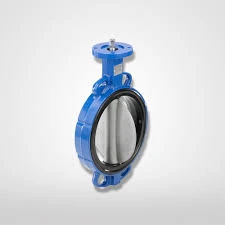ኅዳር . 13, 2024 15:54 Back to list
ball check valve
Understanding Ball Check Valves Functionality and Applications
A ball check valve is an essential component in fluid control systems, designed to prevent backflow and ensure the unidirectional flow of liquids or gases. Its simplicity in design and effectiveness in operation make it a popular choice across various industries.
What is a Ball Check Valve?
At its core, a ball check valve consists of a spherical ball positioned within a valve body. The ball acts as a blocking mechanism. When fluid flows in the desired direction, it pushes the ball away from the seat, allowing the fluid to pass through. If the flow reverses, the ball is pushed back into the seat, sealing the opening and preventing backflow. This simple yet effective mechanism is what makes the ball check valve a critical component in many applications.
Functionality
The functionality of a ball check valve hinges on two main principles pressure differential and gravity. The valve operates under the influence of fluid pressure. When the pressure on one side of the valve exceeds the pressure on the other, the ball moves away from the seat. It quickly allows fluid to flow through. Conversely, when the pressure on the inlet side decreases, the ball falls back into place, ensuring a tight seal and preventing any reverse flow.
Ball check valves are typically installed in horizontal or vertical piping systems. If installed vertically, gravity assists in sealing the ball against the seat. This design ensures a reliable closure, which is particularly critical in systems where backflow can lead to contamination or damage.
Types of Ball Check Valves
There are various types of ball check valves, including
1. Floating Ball Check Valve The ball is free to move up and down, sealing against a valve seat. It is typically used in lower pressure applications. 2. Spring-loaded Ball Check Valve In this version, a spring holds the ball against the seat, ensuring it remains sealed even under low pressure, allowing it to function effectively against backflow.
3. Lever-operated Ball Check Valve Incorporating a lever mechanism, this type can be opened manually, providing additional control over flow direction when required.
Each type serves specific applications, making it essential to select the right valve type for your needs.
ball check valve

Applications
Ball check valves find applications in a broad range of industries, including
1. Water and Wastewater Treatment Used in pumps to prevent backflow, protecting the system from contamination and maintaining efficient operation.
2. Oil and Gas In pipelines and refining operations, ball check valves prevent reverse flow, protecting equipment and maintaining integrity throughout the processes.
3. Food and Beverage Industry Ensures sanitary conditions by preventing backflow, which could lead to contamination in processed goods.
4. Pneumatic and Hydraulic Systems Essential in controlling fluid direction and pressure, maintaining system efficiency and safety.
Advantages of Ball Check Valves
The main advantages of ball check valves are their simplicity, reliability, and ease of installation. They are generally low-maintenance due to their straightforward design. Furthermore, they can withstand high pressures and temperatures, making them suitable for challenging applications.
In addition to durability, ball check valves are also cost-effective. They provide significant protection against backflow while minimizing potential damage and contamination, ultimately saving costs in repairs and maintenance.
Conclusion
Overall, ball check valves serve a fundamental role in ensuring the efficiency and safety of various fluid systems. Their effective design allows for the reliable prevention of backflow, making them indispensable in numerous industrial applications. Understanding the functionality, types, and applications of ball check valves can assist engineers and operators in making informed decisions about fluid control systems, thereby enhancing operational efficiency and safety in their processes.
Share
-
Reliable Wafer Type Butterfly Valves for Every IndustryNewsJul.25,2025
-
Reliable Flow Control Begins with the Right Ball Check ValveNewsJul.25,2025
-
Precision Flow Control Starts with Quality ValvesNewsJul.25,2025
-
Industrial Flow Control ReliabilityNewsJul.25,2025
-
Engineered for Efficiency Gate Valves That Power Industrial PerformanceNewsJul.25,2025
-
Empowering Infrastructure Through Quality ManufacturingNewsJul.25,2025